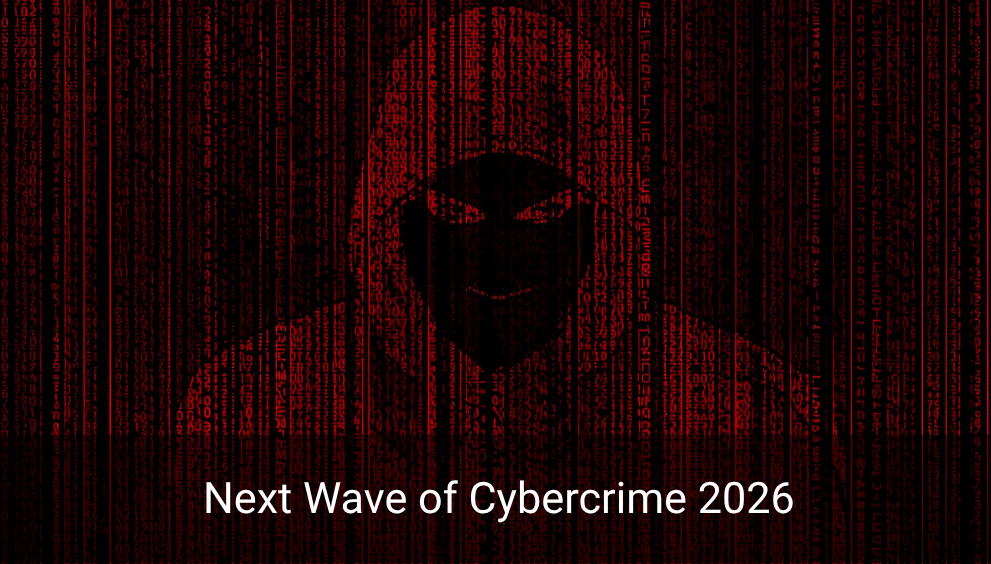The first sentence is about how the cybersecurity landscape is always changing at the same pace as the technology it is meant to protect. It is stated that new tools, new habits, and new connections are making it easier for attackers to have new ways to attack. This guide covers emerging cyber threats discussed in the industry for 2026, why these threats keep changing, and what organisations and individuals in India can do to be ready.
Emerging Threats in Cyber Security
Several forces are shaping the landscape, including growing concerns about identity theft and data privacy. None guarantees an outcome, yet together they widen the attack surface.
- Artificial Intelligence at Scale
Readily available tools can produce believable text, voice, and video and automate routine tasks.
- The Internet of Things Everywhere
Homes, offices and factories add connected devices faster than they add visibility or patching.
- Hybrid and Remote Work
Laptops, mobiles and home routers sit outside traditional boundaries. Identity has become the new perimeter.
- Cloud by Default
Benefits arrive quickly, but misconfigurations and over-privileged access can expose data.
- Long Supply Chains
One weak link in a vendor, integrator or update mechanism can ripple downstream.
These factors do not guarantee outcomes. They simply create conditions where emerging cyber risks can grow if left unmanaged.
Types of Emerging Cyber Threats to Watch
Here are the types of emerging cyber threats to watch:
1. Ransomware and Malware Trends in 2026
Ransomware discussions often focus on how the business model keeps adapting.
- Multiple Pressure Points
Encryption is paired with data theft and pressure on partners or customers.
- Faster Foot-in-the-Door
Initial access brokers sell stolen credentials from infostealers and botnets.
- Targeting by Disruption Value
Services where downtime is costly, such as healthcare delivery or logistics coordination, attract attention.
- Cross-Platform Payloads
Malware that operates across Windows, Linux and virtualised hosts complicates recovery.
- Living Off the Land
Abuse of built-in administrative tools reduces the number of obvious alerts.
2. AI-Powered Cyber Attacks
AI and machine learning can accelerate parts of an attack path.
- Precision Phishing
Language tools produce emails and chats in Indian languages and English, tuned to brand voice and role.
- Deepfake Voice and Video
Synthetic calls and clips may imitate executives, relatives or officials to trigger payments or one-time passwords.
- Automated Reconnaissance
Scripts can scan open-source repositories and leaked datasets to map staff, suppliers, and exposed services.
- Adaptive Evasion
Code can probe a device and adjust its tactics to the one most likely to slip past defences.
The same technologies also assist defenders with triage, anomaly spotting and response playbooks, for example, when an organisation uses Quick Heal Total Security as part of its endpoint layer.
3. Vulnerabilities in IoT and Smart Devices
Connected devices often ship with convenience ahead of hardening.
- Default Credentials and Weak Updates
Hard-coded passwords and insecure firmware delivery appear frequently in incident reviews.
- Shadow Deployments
Teams plug in cameras, printers and sensors without central oversight.
- Smart Home to Office Crossover
Personal assistants, televisions, and routers share space with work accounts on mobile devices.
- Industrial IoT Exposure
Controllers and sensors need strict segmentation to prevent monitoring from reaching business systems.
4. Cloud Security and Data Breach Risks
Cloud and SaaS adoption continues to rise across Indian enterprises and start-ups.
- Misconfigurations
Open storage, permissive security groups and wide identity roles are common pitfalls.
- Key and Token Leakage
Secrets in code repositories, build logs, or screenshots can grant quiet access.
- Third-Party Integrations
App-to-app connections extend trust beyond the original plan.
- Data Lifecycle Gaps
Snapshots, backups and test copies may hold sensitive information longer than intended.
How Hackers Target Businesses vs Individuals
Tactics differ by target and context.
- Businesses
The initial target areas are fraudulent business emails, supplier impersonation, ransomware, and remote management tools. Malicious parties seek antiquated VPNs, unpatched edge devices, and weak multi-factor authentication. Information that exposes the company to regulatory or reputational risks is usually the ‘ransom’ that is demanded.
- Individuals
One of the main techniques of scams is to use the concepts of urgency and familiarity. In India, the main topics are fake courier notices, KYC updates, quick-loan offers, investment groups, and UPI payment requests. Communications are sent via SMS, WhatsApp, and social media, and are usually in the local languages.
Industries Most at Risk in 2026
Some sectors appear regularly in risk heatmaps because disruption or data sensitivity can amplify impact.
- Healthcare
Time-critical services and sensitive records make downtime costly.
- Financial Services and Fintech
Valuable data, payment flows, and dense third-party links attract attention.
- Government and Public Services
Citizen identity systems and service portals are central to daily life.
- Critical Infrastructure
Power, water, transport and telecom depend on availability.
- Education
Large user populations, limited budgets and extensive personal data increase exposure.
Steps to Protect Against Emerging Cyber Threats
Defence improves when teams combine strong basics with a rehearsed response.
- Know Your Estate
Keep an accurate inventory of devices, apps, data stores and vendors. Unknown assets cannot be secured.
- Harden Identity
Use phishing-resistant multi-factor authentication where practical. Rotate and vault secrets. Watch for impossible travel and unusual sign-ins.
- Patch and Reduce Exposure
Prioritise internet-facing systems. Remove unused services and admin tools. Segment networks so that compromise does not spread.
- Secure the Cloud by Design
Use infrastructure-as-code, guardrails, and least-privilege roles. Monitor posture continuously. Review app-to-app connections and API keys.
- Strengthen Email and Endpoint
Apply DMARC, SPF and DKIM. Use modern email filtering and sandboxing. Deploy endpoint detection and response on servers and clients.
- Back Up and Practise Recovery
Keep offline or immutable backups. Test restorations, not just backup jobs. Recovery speed lowers the impact of extortion.
- Train for Real-World Scenarios
Role-based sessions for finance, support, development and leadership help. Include awareness of deepfakes and UPI-based social engineering.
- Adopt Zero-Trust Principles
Verify explicitly, limit implicit trust and assume breach. Micro-segment access to critical systems and data.
- Prepare Incident Response
Keep contact trees, legal and communications playbooks ready. Run tabletop exercises with realistic timelines.
These steps support both today’s operations and the future of cybersecurity and cybercrime discussions, where attackers and defenders evolve together.
What is the Future of Cyber Security in 2026
Conversations about cyber security 2026 primarily focus on identity-centric controls, data-centric protection, and resilience. Regular triage could be increasingly automated, with experienced staff concentrating on architecture, threat hunting, and supplier risk.
Collaboration among industry, academia and government in India remains an essential ingredient, especially around payments, public platforms and critical infrastructure. The direction points to steady improvement in basics, supported by measured adoption of new tools.
Final Thoughts: Building Resilience Against Future Cybercrime
Threats will continue to adapt. A resilient approach sees security as a business risk to be addressed rather than a side project. Put figures on the things that really matter, for example, patching time and detection time. Continue levelling up access controls, backup drills and supplier reviews. Disseminate the learnings to all teams and non-technical staff. With a steady approach to exercising, not only organisations but also individuals in India will be able to identify future cyber threats with greater certainty.
Frequently asked questions
-
What is the most targeted industry for cyber attacks in 2025?
Rankings differ across reports. Healthcare, financial services, and government often rank high due to sensitive data and the cost of disruption. Local patterns vary by region and regulation.
-
What is the future of cybersecurity?
Ongoing discussions point to identity-first design, zero-trust adoption, secure-by-default cloud setups and quicker incident response, supported by skilled people and transparent governance.
-
What is the number one cybersecurity threat today?
Risk depends on the weakest control in a given environment. Commonly cited front-runners include ransomware, business email compromise and supply chain compromise
-
How is AI being used in cyber attacks?
Examples often discussed include tailored phishing, synthetic voice or video for social engineering, automated reconnaissance and support for malware evasion. The same ideas also assist defenders.
-
What are the cyber threats in India?
Themes include UPI-related scams, KYC-style phishing, supplier compromises at service providers and exposure from rapid cloud and SaaS adoption, often delivered in local languages across multiple channels.



